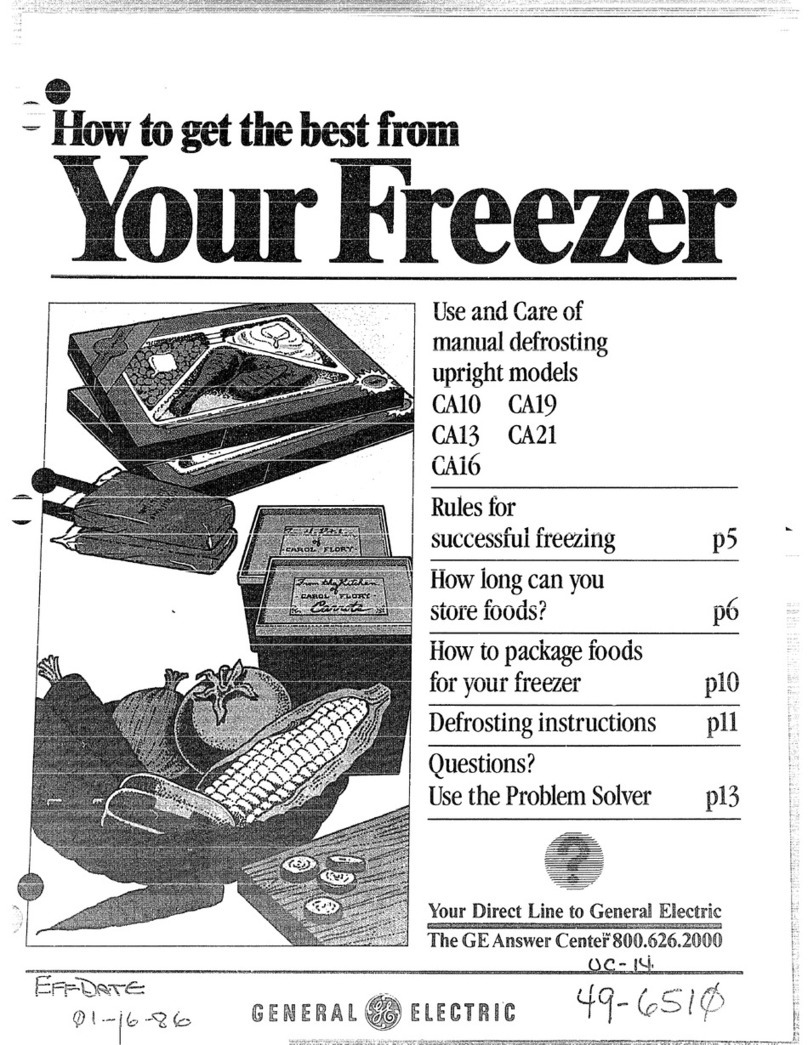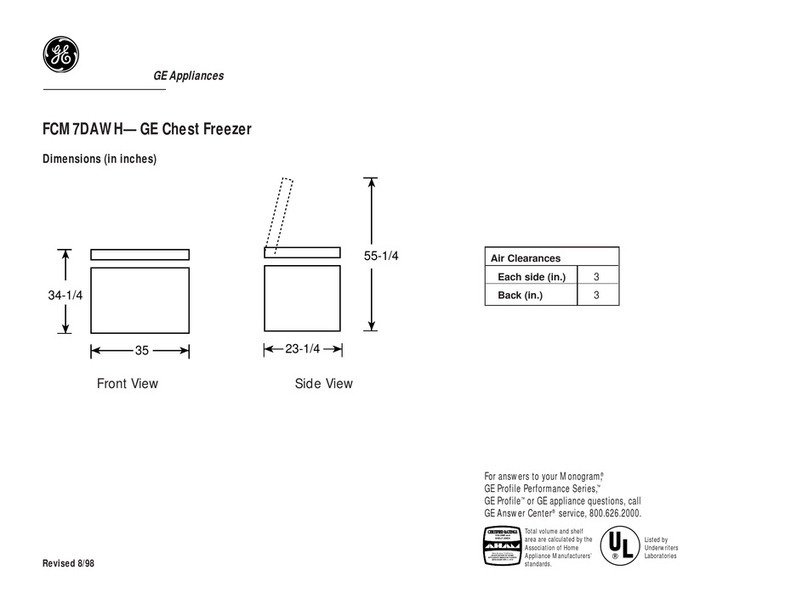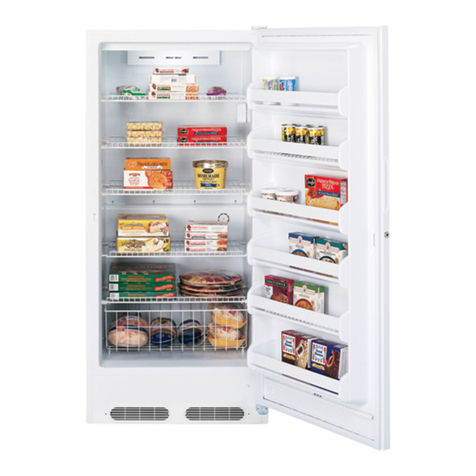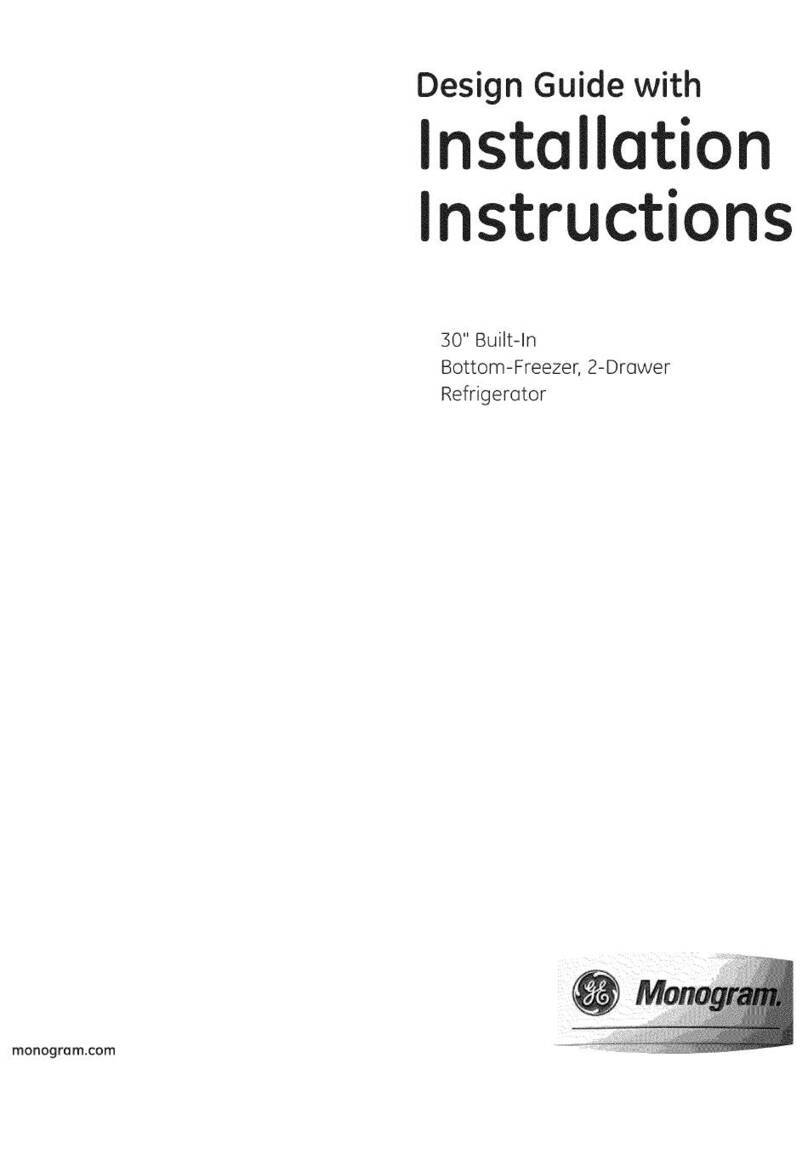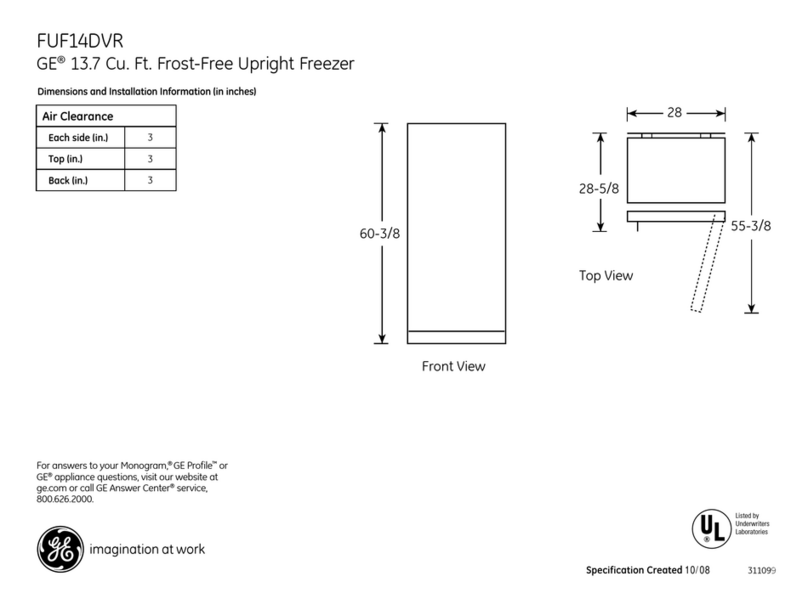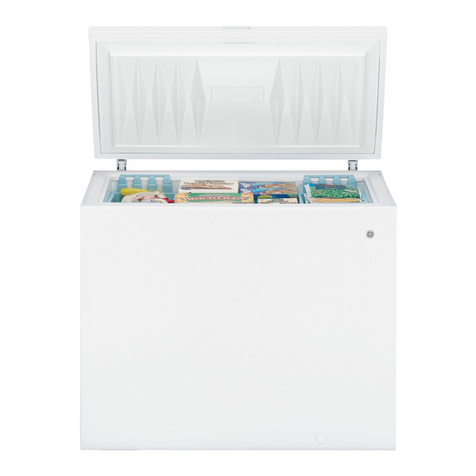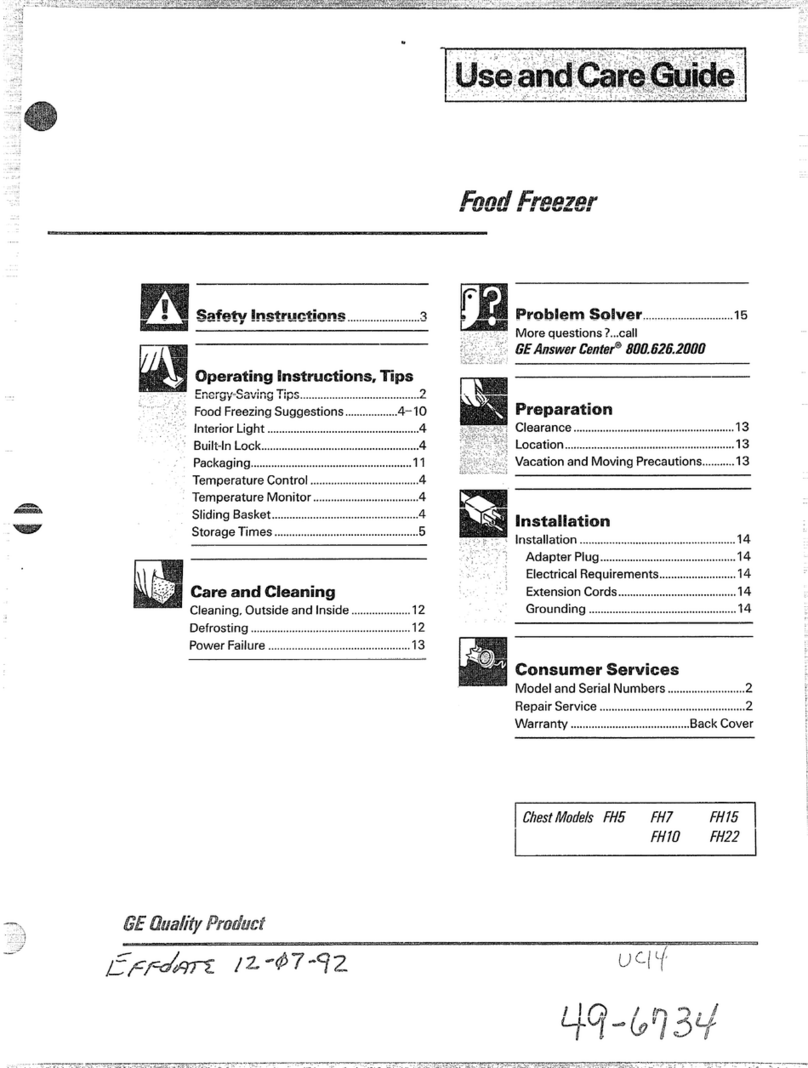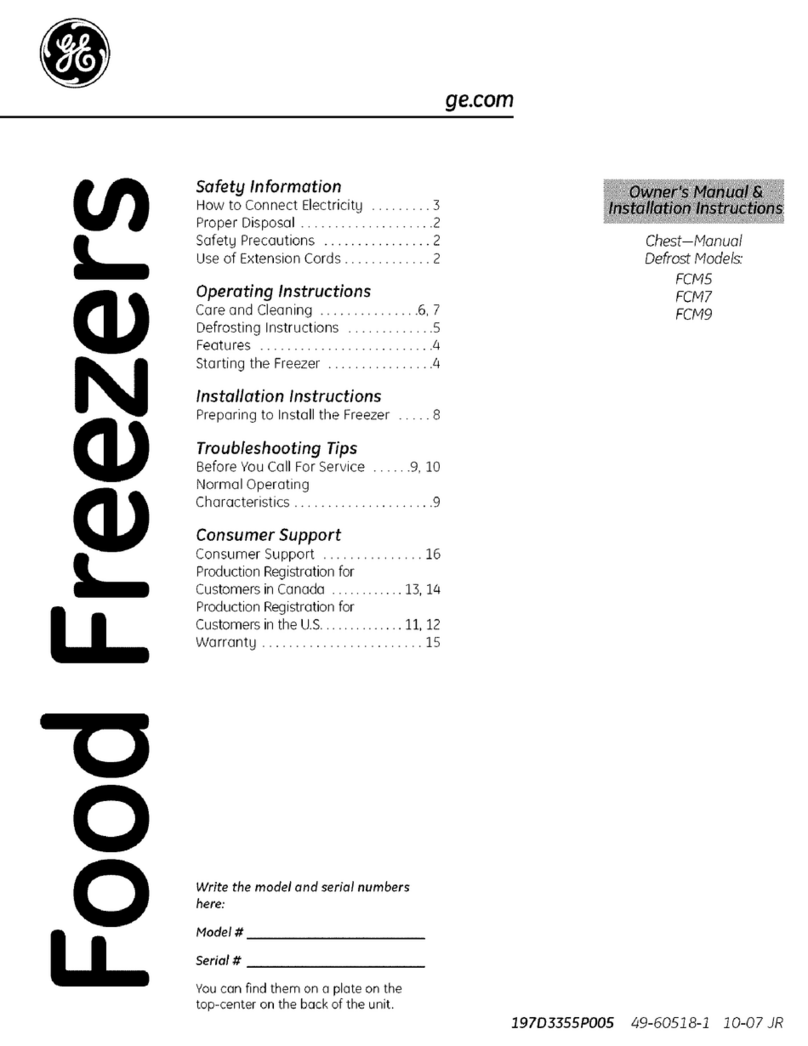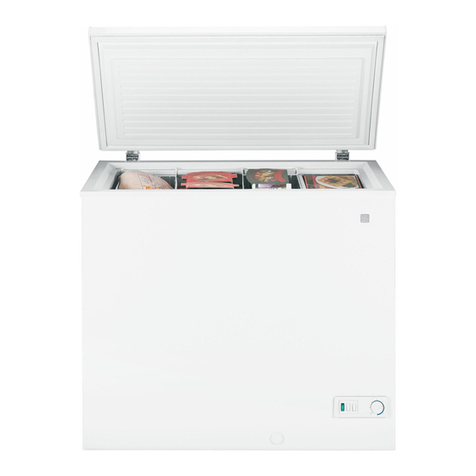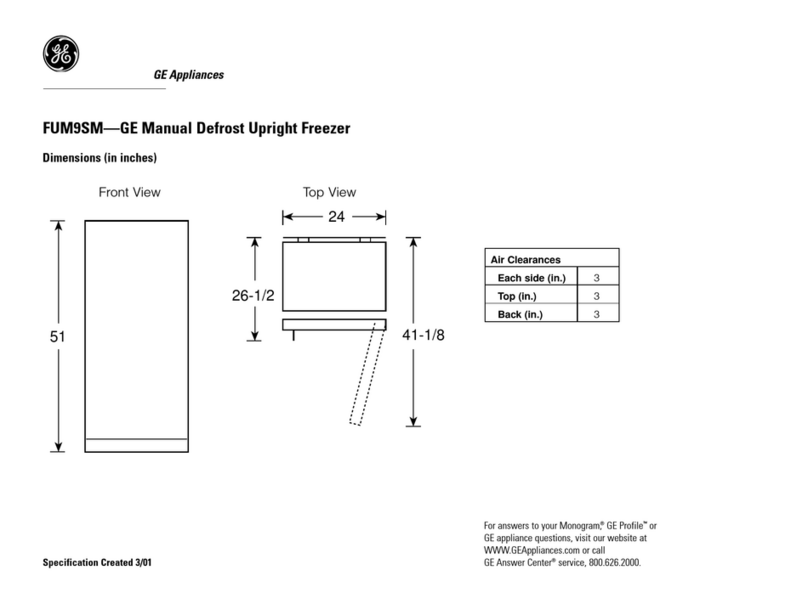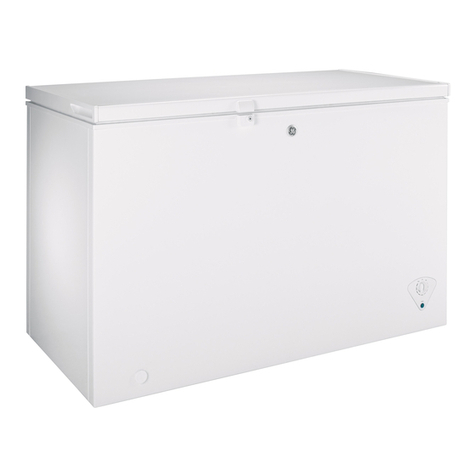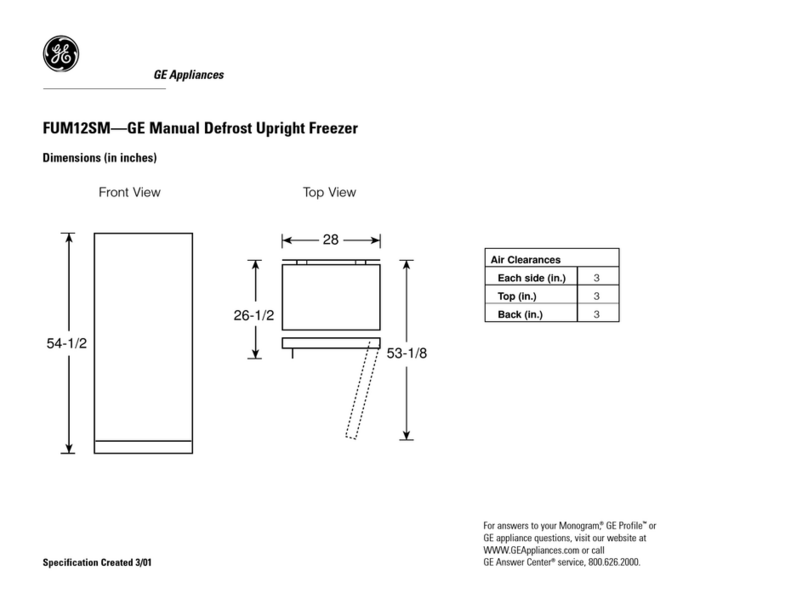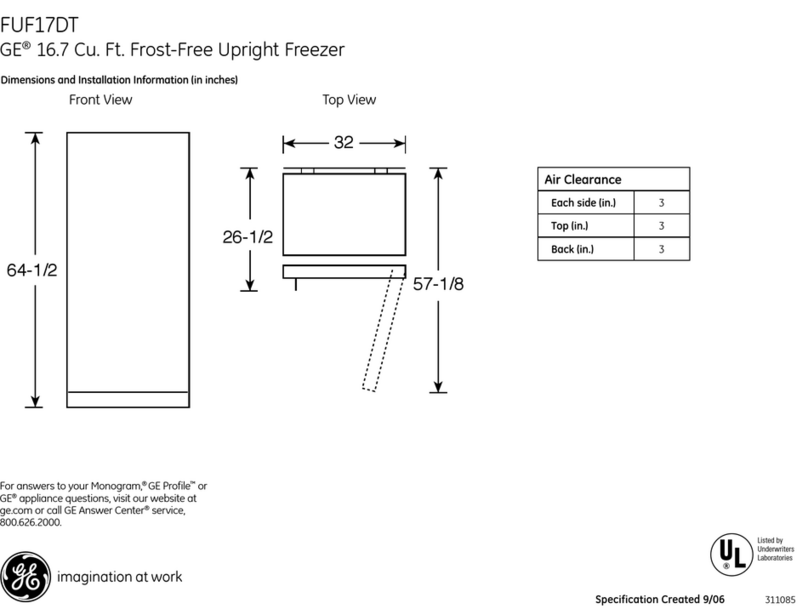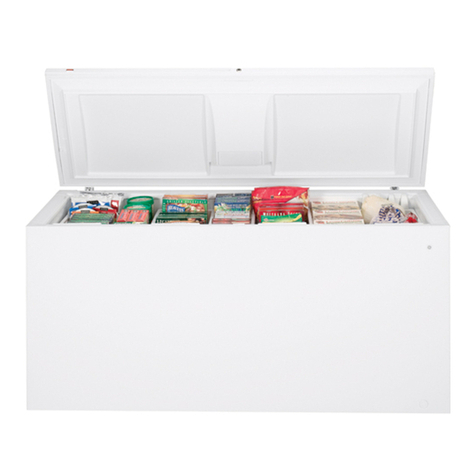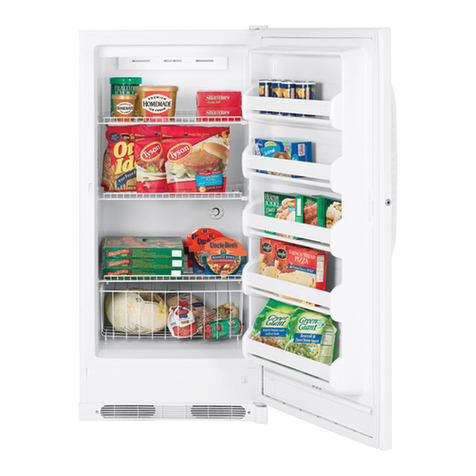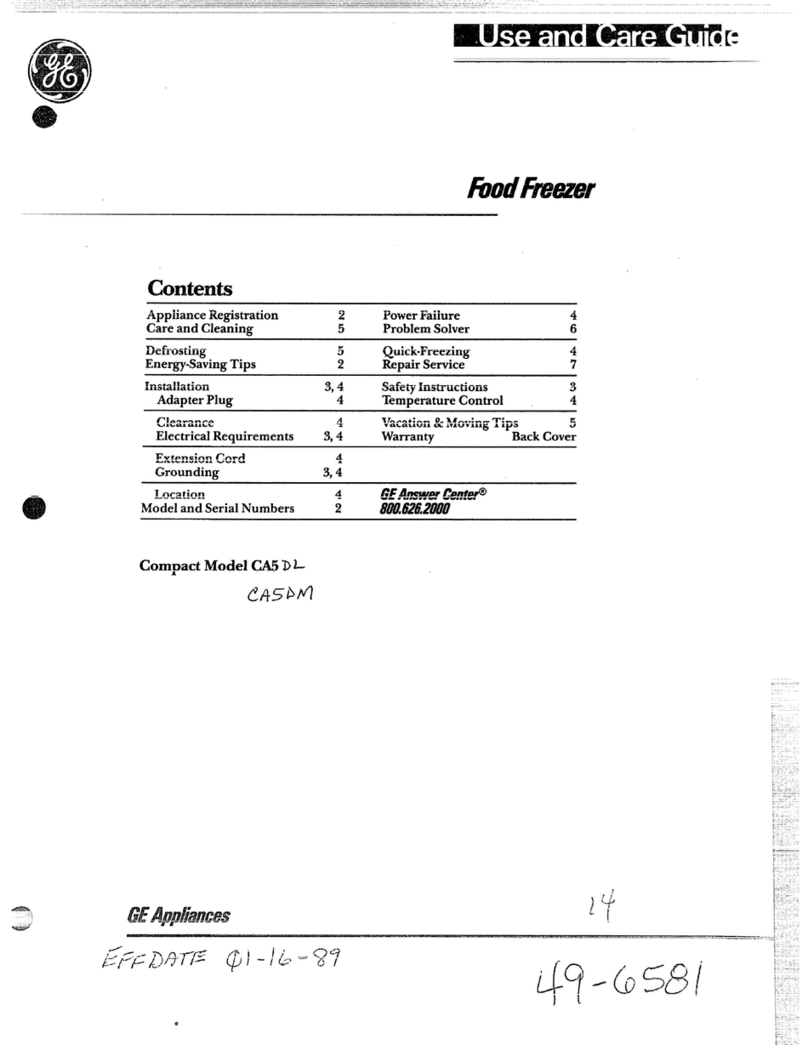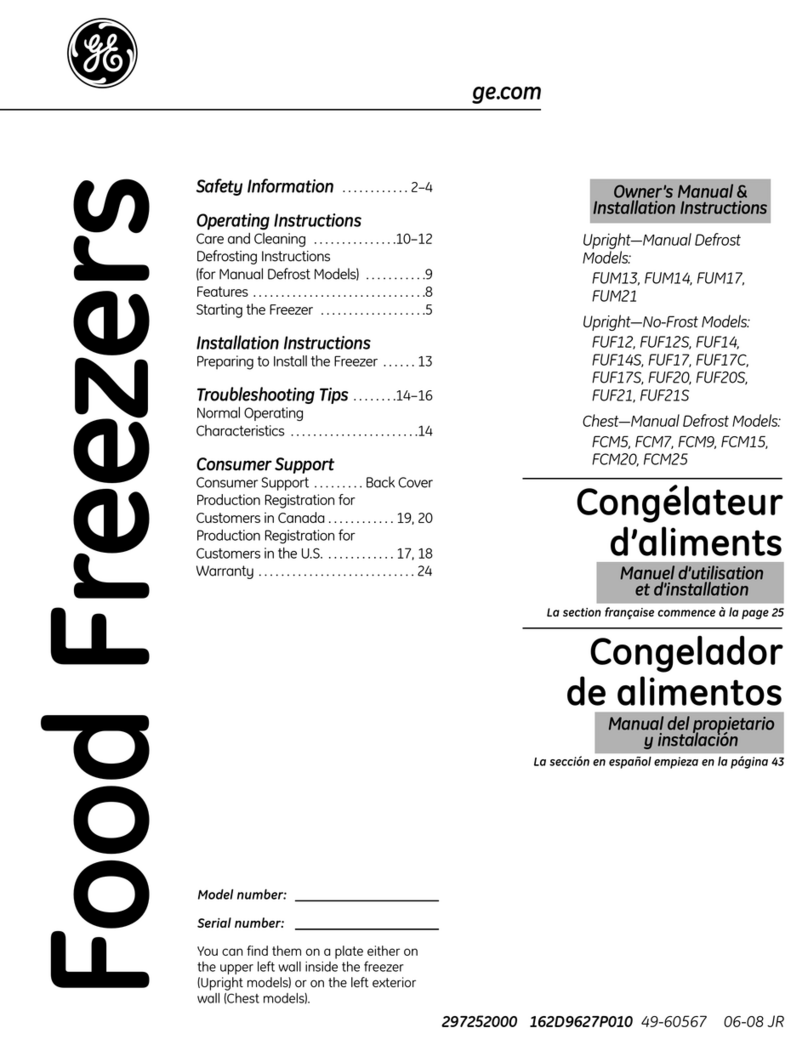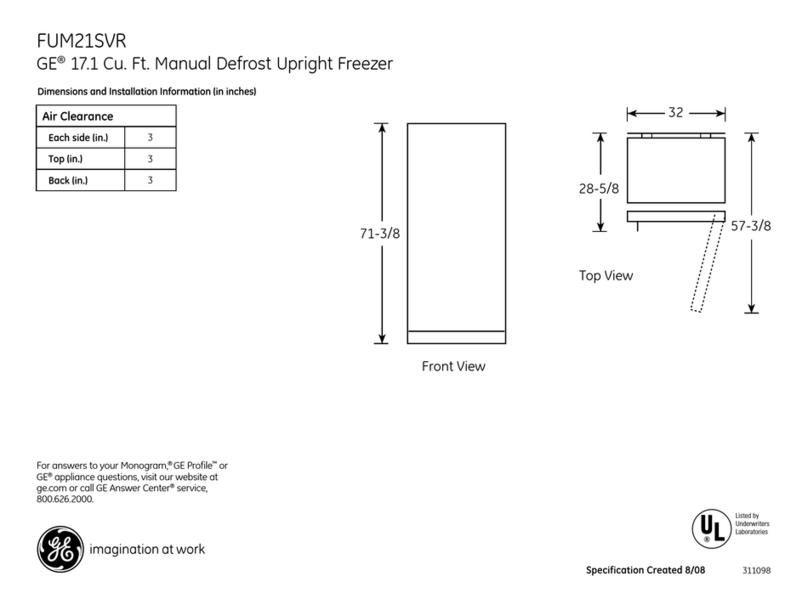FOOD FREEZING SUGGESTIONS
Rules for Successful Food Freezing
●
●
●
●
●
Freeze the best.
Freeze only top-quality foods. Freezing
“
Freeze correct quantities. There is an established
retains quality and flavor; it cannot improve quality.
Keep work area clean and work quickly.
The quicker
fruits and vegetables are frozen after picking, the
better the frozen product will be. You’ll save time,
too, with less culling and sorting.
Choose correct packaging materials. Frozen foods
will dry out if not properly wrapped or packaged. Both
rigid containers and flexible bags or
wrappers can lx
used. Make sure they are designed for freezing.
●
Follow reliable instructions for freezing different
types of food.
Freeze foods in practical meal-sized packages
●
and fill container properly. When placing liquid or
semi-liquid foods in containers, leave about 1/2” at
top ( 1
X“
for glass containers) to allow for expansion
during freezing.
Suggested Storage Times
Eating qttality drops after time shown Months in Freezer at OOF. (-180 C.)
Fresh Meats
Roasts (Beef & Lamb)
.,.,..,.............,..,...,.....,....,.6
to 12
Roasts (Pork & Veal)
.,.,,,.,.,.,.,,.,...,.,..,,,.,.,.,,..,,,,...,.,.,..
,.,,....,.,4
to 8
Steaks (Beef ).... . . . . . . . . . . . . . . . . . . . . . . . . . . . . . . . . . . . . . . . . . . . .
.
.........................6 to 12
Chops (Lamb). ................6 to 9
Chops (Pork)
......................................................3
to 4
Ground & Stew Meats . . . . . . . . . . . . . . . . . . . . . . . . . . . . . . . . . . . . . . . . . . . .
.
................3 to 4
Variety Meats (Beef )... . . . . . . . . . . . . . . . . . . . . . . . . . . . . . . . . . . . . . . .......................3 to 4
Variety Meats (Pork) ..............2 to 3
Sausage (Pork)
.......................................................................l
to 2
Opossum, Rabbit, Squirrel . . . . . . . . . . . . . . . . . . . . . . . . . . . . . . . . . . . . . . . ...............6 to 8
Processed Meats
Bacon ..,................1
Frankfurters .... I/z
Ham (Whole, Half or Slices) ................1 to 2
Cooked Meats
Cooked Meats and Meat Dishes ..............................................2 to 3
Gravy & Meat Broth . . . . . . . . . . . . . . . . . . . .
....2
to 3
Fresh Poultry
Chicken & Turkey (Whole) .....12
Chicken
(Pieces) . . . . . . . . . . . . . . . . . . . . . . . . . . . . . . . . . . . . . . . . .................................9
Turkey (Pieces)
..,.,.
..,....,..,.,,,..,.,.,,.,,,,,,..,
,,,..,,.,.,..,.,.,,.,..,.,,
,,,.,,6
Duck & Goose (Whole),...,,.,,,..,.,,,..,,......,,..,..,,....., .....................6
Giblets
3
Game
Birds
8 to 12
Cooked Poultry
Pieces (Covered with Broth) .,.,....,....,,.,,,..,.,,,,.,,.,.,..,,,,,. .,....,....,..6
Pieces (Not
Covered),.....,.,.,..,.,.,....,,.,,.,....,...
,,,,.........,.,.............1
Cooked Poultry Dishes . . . . . . . . . . . . . . . . . . . . . . . . . . . . . . . . . . . . . . . . . . ..................4 to 6
Fried Chicken ....,.,,,,.,.,.,,..,.,,.,.,.,,.,..,.,,.,.,.,,,,., ,.,,,..,.,,..................4
FISH
Shellfish..... . . . . . . . . . . . . . . . . . . . . . . . . . . . . . . . . . . . . . . .
.
,.,........,.,.............,........Up to 4
Lean
Fish...................................................,
,,..,,.,.,..,.,,,,.,..,..,,,.6
to 8
Fatty Fish . . . . . . . . . . . . . . . . . . . . . . . . . . . . . . . . . . . . . .
.
. . . . . . . . . . . . . . . . . .
,,,.2
to 3
Shrimp (Raw, Unpeeled) . . . . . . . . . . . . . . . . . . . . . . . . . . . . . . . . . . . . . . . 12
Shrimp (Cooked) ..................3
maximum of food your freezer is designed to freeze
at one time—approximately 3 pounds per cubic foot
of freezer capacity. In normal position, your freezer’s
control dial will maintain sufficiently low temperatures
in the freezer to freeze recommended quantities of
food. If you have a large quantity of food to freeze,
store part of it in your refrigerator’s fresh food
compartment until the first quantity is frozen.
Freeze foods quickly. Continually rotate frozen
foods to the front of the freezer so the longest-frozen
foods are used first.
Store frozen foods immediately. Commercially
frozen food can be stored any place in the freezer.
These foods should not be allowed to thaw before
being placed in the freezer.
Eating quality drops after time shown Months in Freezer at OOF. (-180 C.)
PRODUCE
Most Fruits & Vegetables . . . . . . . . . . . . . . . . . . . . . . . . . . . . . . . . . . . . ...................8 to 12
Asparagus . . . . . . . . . . . . . . . . ....6 to 8
Mushrooms . . . . . . . . . . . . . . . . . . . . . . . . .
.
..........................UP to 6
OnIons . . . . . . . . . . . . . . . . . . . . . . . . . . . . . . . . . . . . . . . . . ..........3 to 6
Citrus Fruits . . . . . . . . . . . . . . . . . . . . . . . . . . . . . . . . . . . . . ...........3 to 4
Potatoes (French Fries) . . . . . . . . . . . . . . . . . . . . . . . . . . . . . . . . . . . . . . . . . . . . . .
.
............2 to 3
BAKERY GOODS
Breads, Quick (Baked) . . . . . . . . . . . . . . . . . . . . . . . . . . ..........2
Breads, Yeast (Baked) . . . . . . . . . . . . . . . . . . . . . .
.
...........4 to 8
Breads, Yeast (Unbaked) . . . . . . . . . . . . . . . . . . . . . . .
.
.......... I/2
Cakes . . . . . . . . . . . . . . . . . . . . . . . . . . . . . . ,.,..,.,....,,...,..,.,.,.........Up to 1
Cookies . . . . . . . . . . . . . . . . . . . ...................................................................4
Pastry (Unbaked) . . . . . . . . . . . . . . . . . . . . . . . . . . . . . . . . . . . .
............,.......................2
Pies (Baked) . . . . . . . . . . . . . . . . . . . . . . . . . . . . . . ............... UP to 1
Pies (Unbaked)
,...,.,,......,.......2
DAIRY PRODUCTS
Butte r.,.,,.,.,..,.,,.,.,,,..,., . . . . . . . . . . . . . . . . . . . . . . . . . . . . . .
.
...........5 to 6
Cottage Cheese . . . . . . . . . . . . . . . . . . . . . . . . . . . . . . . . . . . . . . . . ...................................1
Soft Cheese ........................................4
Hard or Semi-Hard Cheese ..............................6 to 12
Eggs
,,,.,.................................1
2
Ice Cream, Sherbet . . . . . . . . . . . . . . . . . . . . . .
..............Up
to 1
Milk........... . . . . . . . . . . . . . . . . . . . . . . . . . . . . . . . . . . . . .
.
............................................1
OTHER FOODS
Candies . . . . . . . . . . . . . . . . . . . . . . . . . . . . . . . . . . . . . .................................................l 2
Left-Overs (Cooked) . . . . . . . . . . . . . . . . . . . . . . . . . . . . ............. UP to 1
Pizza
. . . . . . . . . . . . . . . . . . . . . . . . . . . . . . . . . . . . . . . . . . . . . . . . . . . . . . . . . . . . . . . . . . . . . . . . . . . . . . . . . . . . . . . . . .
.
1
Prepared Dishes..,.,.,,.,..,...,,,,.,..,....,...,....... .............................2 to 3
Sandwiches . . . . . . . . . . . . . . . . . . . . . . . . . . . . . .
.....................UP
to 1
Soups, Stews, Casseroles . . . . . . . . . . . . . . . . . . . . . . . . . . . . . . . . . . .....................2 to 3
New techniques are constantly being developed. Consult the County
Extension Service or your local Utility Company for the latest
information on freezing and storing foods.
(continued next
pa<qe)
5
